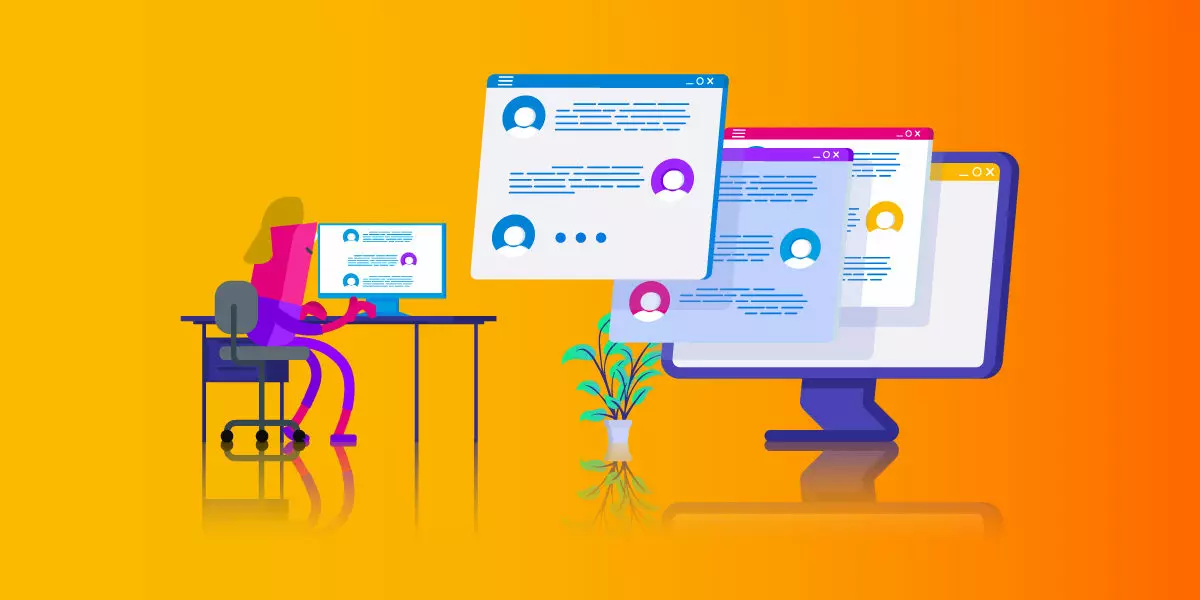Learning Management Systems (LMS): Realizing Potential Guide
In the advanced age, where data is plentiful and learning exceeds all logical limitations, Learning The executives Frameworks Learning Management Systems (LMS) have arisen as key devices for teachers, organizations, and people the same. From working with consistent course conveyance to following advancement and cultivating coordinated effort, LMS stages have altered the manner in which we approach schooling and preparing. In this thorough aide, we dig into the complexities of LMS, investigating their highlights, benefits, and the critical job they play in current learning conditions.
Understanding Learning Management Systems
What is an LMS?
At its center, a LMS is a product application intended to smooth out the organization, documentation, following, and conveyance of instructive courses or preparing programs. It fills in as a brought together center point where teachers can make, make due, and disseminate content, while students can get to assets, take part in exercises, and keep tabs on their development.
Key Components of an LMS
A successful LMS ordinarily contains a few fundamental parts, including:
Course Administration: Permits educators to make and coordinate courses, transfer learning materials, and set evaluations.
Client The executives: Empowers heads to select students, relegate jobs, and oversee client consents.
Content Administration: Works with the creation, stockpiling, and sharing of media content like recordings, reports, and introductions.
Evaluation and Following: Gives instruments to making tests, tasks, and appraisals, alongside powerful following components to screen student progress.
Correspondence and Cooperation: Supports consistent correspondence among teachers and students through highlights like conversation discussions, informing, and virtual homerooms.
Advantages of Utilizing a LMS
Upgraded Openness and Adaptability
One of the essential benefits of a Learning Management System is its capacity to convey learning content whenever, anyplace. With the ascent of remote work and online instruction, students can get to courses and assets from any gadget with a web association, cultivating a culture of ceaseless learning and adaptability.
Customized Opportunities for growth
LMS stages frequently consolidate highlights like versatile learning calculations and customized suggestions, permitting students to get altered content in view of their inclinations, expertise level, and learning pace. This customized approach improves commitment as well as expands learning results.
Further developed Organization and Following
For teachers and executives, a Learning Management Systems smoothes out authoritative undertakings like course creation, enlistment the board, and execution following. With worked in examination and announcing apparatuses, educators can acquire significant bits of knowledge into student progress, recognize regions for development, and settle on information driven choices to streamline course conveyance.
Choosing the Right Learning Management System

Factors to Consider
When selecting an LMS for your organization or educational institution, it’s essential to consider the following factors:
Scalability: Ensure that the LMS can accommodate your current needs and scale with your organization as it grows.
User-Friendly Interface: Look for an intuitive interface that is easy to navigate for both instructors and learners.
Integration Capabilities: Assess the LMS’s compatibility with existing systems and tools, such as HR software or content authoring tools.
Support and Training: Consider the level of customer support and training resources provided by the LMS vendor to assist with implementation and ongoing usage.
Maximizing the Impact of Learning Management Systems
Implementation Best Practices
Once you’ve selected an LMS that aligns with your organization’s needs and goals, successful implementation is key to realizing its full potential. Here are some best practices to consider:
Stakeholder Engagement: Involve key stakeholders, including instructors, administrators, and IT personnel, from the early stages of implementation to ensure buy-in and collaboration.
Comprehensive Training: Provide thorough training and support resources to empower users to leverage the full capabilities of the LMS effectively. This may include online tutorials, workshops, and ongoing technical support.
Content Curation: Invest in quality content creation and curation to keep courses engaging and relevant. Encourage instructors to regularly update and refresh course materials to reflect the latest industry trends and insights.
Feedback Mechanisms: Establish channels for collecting feedback from both instructors and learners to continuously improve the LMS experience. This feedback can inform future enhancements and adjustments to better meet user needs.
Measuring Success
To gauge the effectiveness of your LMS implementation and optimize its impact, it’s essential to establish key performance indicators (KPIs) and regularly evaluate progress. Some common metrics to consider include:
Learner Engagement: Monitor metrics such as course completion rates, time spent on activities, and participation in discussions to assess learner engagement and satisfaction.
Learning Outcomes: Measure learner performance through assessments, quizzes, and surveys to evaluate knowledge retention and skill development.
ROI and Cost Savings: Calculate the return on investment (ROI) of your LMS implementation by comparing the costs associated with training delivery before and after adopting the platform. Look for efficiencies gained and cost savings achieved through streamlined processes and reduced administrative overhead.
User Feedback: Solicit feedback from users through surveys, focus groups, and direct communication to gather insights into their experiences with the LMS and identify areas for improvement.
Future Trends and Innovations Of Learning Management System

As technology continues to evolve, so too will the landscape of learning management system. Stay abreast of emerging trends and innovations in the field, such as:
Artificial Intelligence: Integration of AI-powered features, such as chatbots for personalized assistance and predictive analytics for identifying at-risk learners.
Mobile Learning: Increasing emphasis on mobile-friendly design and accessibility to accommodate learners on-the-go.
Microlearning: Adoption of bite-sized learning modules and microcredentials to cater to learners’ short attention spans and busy schedules.
Virtual and Augmented Reality: Leveraging VR and AR technologies to create immersive learning experiences and simulations for hands-on training.
By staying informed and adaptable, you can continue to harness the full potential of learning management systems to drive innovation, enhance learning outcomes, and empower individuals and organizations to thrive in the digital age.
Conclusion
In conclusion, Learning Management Systems have become indispensable tools for modern education and training, offering a myriad of benefits including enhanced accessibility, personalized learning experiences, and streamlined administration. By understanding the key components of an LMS, harnessing its benefits, and selecting the right platform for your needs, you can unlock the full potential of online learning and empower learners to thrive in today’s digital landscape.

